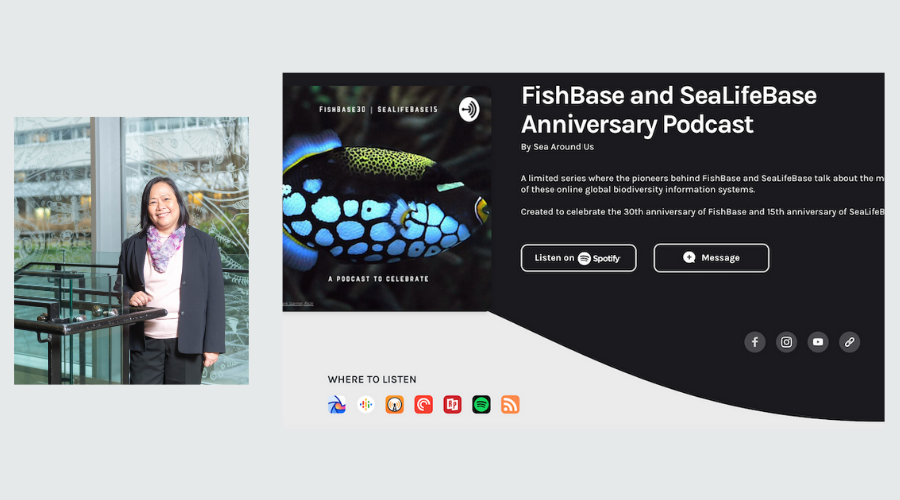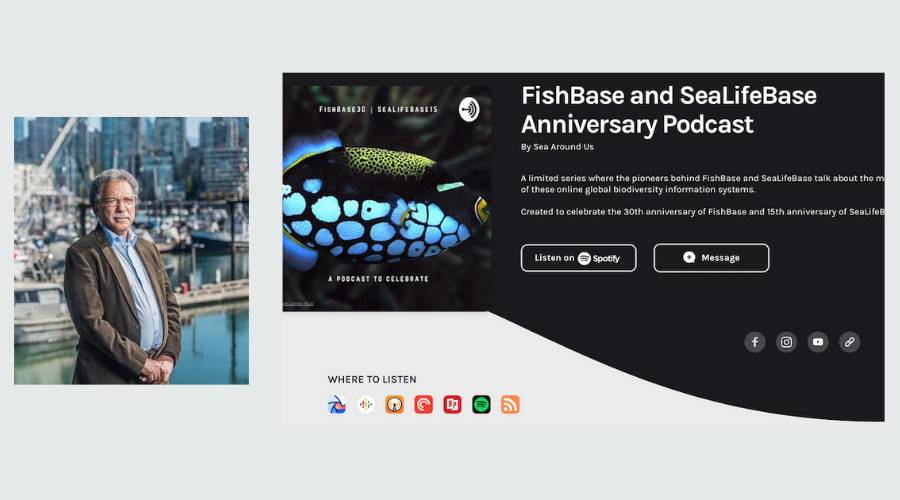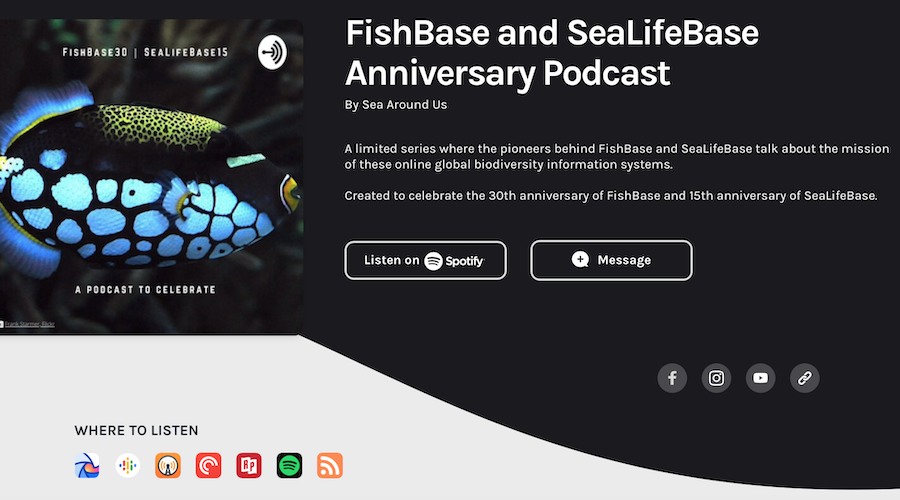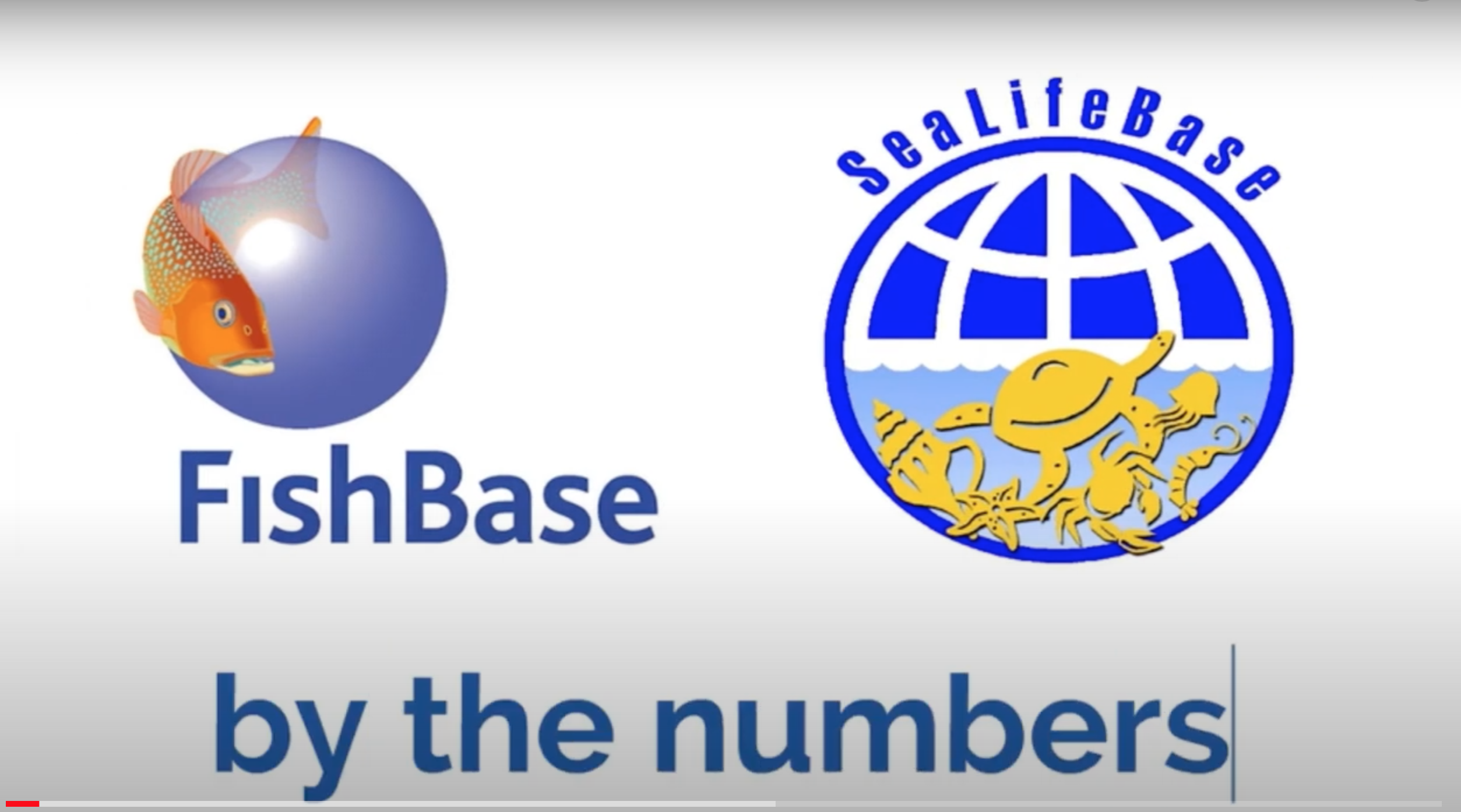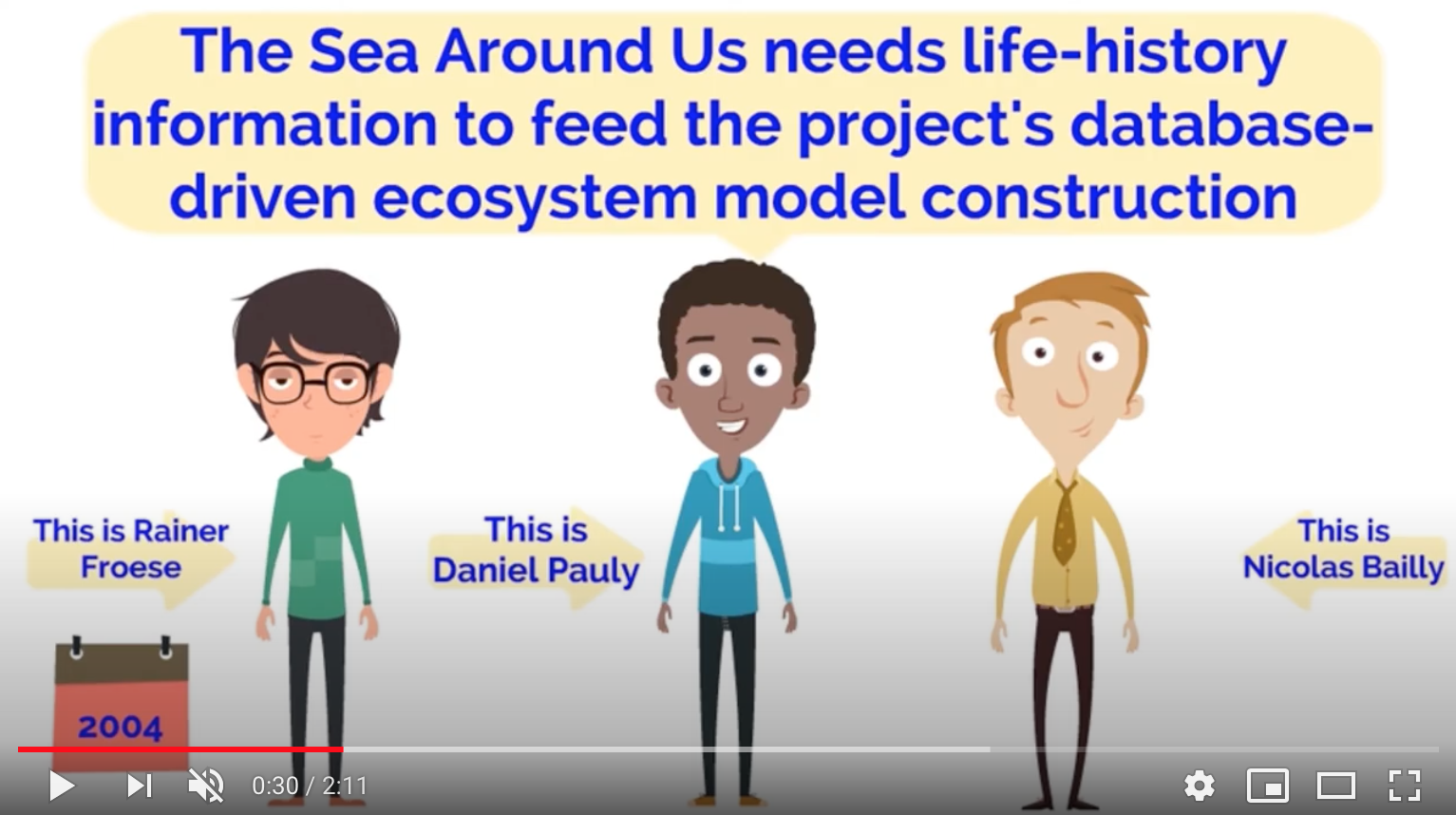On the third episode of the FishBase and SeaLifeBase Anniversary Podcast, Deng Palomares talks about how SeaLifeBase came to be.
Tag: FishBase
Daniel Pauly talks about the creation of FishBase
On the second episode of the FishBase and SeaLifeBase Anniversary Podcast, Daniel Pauly talks about some of the rewards and challenges of creating FishBase and turning it into a leading biodiversity information system.
A conversation with Rainer Froese about FishBase
As part of a year-long campaign aimed at celebrating the 30th anniversary of FishBase and the 15th anniversary of SeaLifeBase, we have launched a limited series of audio interviews with the brains and muscles behind both databases.
FishBase and SeaLifeBase by the numbers
FishBase was born 30 years ago and SeaLifeBase 15 years ago.
The processes and efforts behind the creation of these two databases have been complex and enormous, involving dozens of staff members and thousands of collaborators.
What is SeaLifeBase and how it came to be
The year 2020 marks the 30th anniversary of FishBase and the 15th anniversary of SeaLifeBase, two online global biodiversity information systems that, together, provide biological and ecological information on more than 110,000 marine species.


